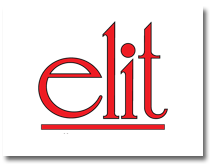According to the mode of action:
- direct acting – to move in the opposite direction of the spring, use only the force performed by the coil (work from 0 bar).
- pilot-operated – to move in the opposite direction of the spring, use the force performed by the coil and hydraulic / pneumatic amplification constructed within the valve (e.g. work from. 0.3, 0.5 or 1 bar).
- combined – direct / servo valves that operates from 0 bar and enable a much greater flow rates than direct valves.
According to the control method:
- NC (normally closed; closed when de-energized, open when energized) and
- NO (normally open; open when de-energized, closed when energized).
Gaskets / seals are made of insulating material which is selected to be resistant to certain media due to its aggressiveness, depending on the relevant pressure-flow conditions in the installation which affect the abrasion (wear) of the seal. The most commonly used materials are:
- NBR (Nitrile butadiene rubber)
- EPDM (Ethylene propylene diene monomer rubber)
- FPM (Fluorinated propylene monomer)
- PTFE (Polytetrafluoroethylene)
- PA (Polyamide, 30% glass-reinforced)
- PU (Polyurethane)
- PEEK (Polyether ether ketone).
The material is selected depending on the mechanical, thermal and chemical requirements. NBR is standardly used for chemically neutral media, for temperatures up to 90 ° C. At higher temperatures of media, ma terials like EPDM, FKM and PTFE are used. Stainless steel is used for high temperature and high frequency ON/OFF switching. Bodies of sceewed valves are made of brass, stainless steel, bronze or thermoplastic. Bodies of flanged valves are made of cast iron, ductile cast iron (steel) or stainless steel. If necessary, flanges my be upgraded to the threaded valves. Direct acting valves:
- ports 1/8″, 1/4″, 3/8″, 1/2″
- rated orifice size from 1 mm to 10 mm
- rated pressure ranges from 0 to 150 bar
- body material: brass, stainless steel
- media: water, air, steam, gas, diesel fuel, ….
Pilot-operated valves:
- ports 1/2″, 3/8″, 3/4″, 1″, 6/4″, 2″
- rated orifice size from 10 mm to 50 mm
- rated operating pressure:
- from at least 0,3 bar to maximum 16 bar (diaphragm – no waterhammer)
- from at least 0,3 bar to maximum 200 bar (piston)
- body material: brass, stainless steel
- media: water, air, steam, gas, LPG, diesel fuel, ….
Combined acting valves
- ports 1/2″, 3/4″, 1″, 6/4″, 2″
- rated orifice size from 12 mm to 50 mm
- rated operating pressure from 0 to 10 bar
- body material: brass
- media: water, air, steam, gas, LPG, diesel fuel, ….
- coils: standard and explosioon proof
Valves for water, air, LPG, oil, …:
- ports 1/2″, 3/8″, 3/4″, 1″, 6/4″, 2″
- rated orifice size from 10 mm to 50 mm
- pilot-operated with diaphragm (0,3 bar to 10,12 or 16 bar – no waterhammer)
- pilot-operated with piston (0,3 to maximum 200 bar)
- combined action valves with diaphragm (0 to 10 bar)
Valves for gas:
- process and safety shut-off valves (to be used with gas detectors exclusively)
- ports 1/2″, 3/4″, 1″, 6/4″, 2″
- rated orifice size from 10 mm to 50 mm
- rated operating pressure from 0 to 1000 mbar
- body material: brass
- coils: standard and explosion proof
Valves for steam:
- solenoid and pressure operated
- ports 1/2″, 3/4″, 1″, 6/4″, 2″
- rated orifice size from 10 mm to 50 mm
- rated operating pressure from 0 to 1, 10 or 16 bar
- body material: brass (solenoid), stainless steel (pressure operated)
- coils: standard and explosion proof
Special valves for:
- vacuum
- cryogenic gases
- aggressive media
- air compressors
- ports 1/2″, 3/4″, 1″, 6/4″, 2″
- rated orifice size from 10 mm to 50 mm
- rated operating pressure from 0 to 1, 10 or 16 bar

